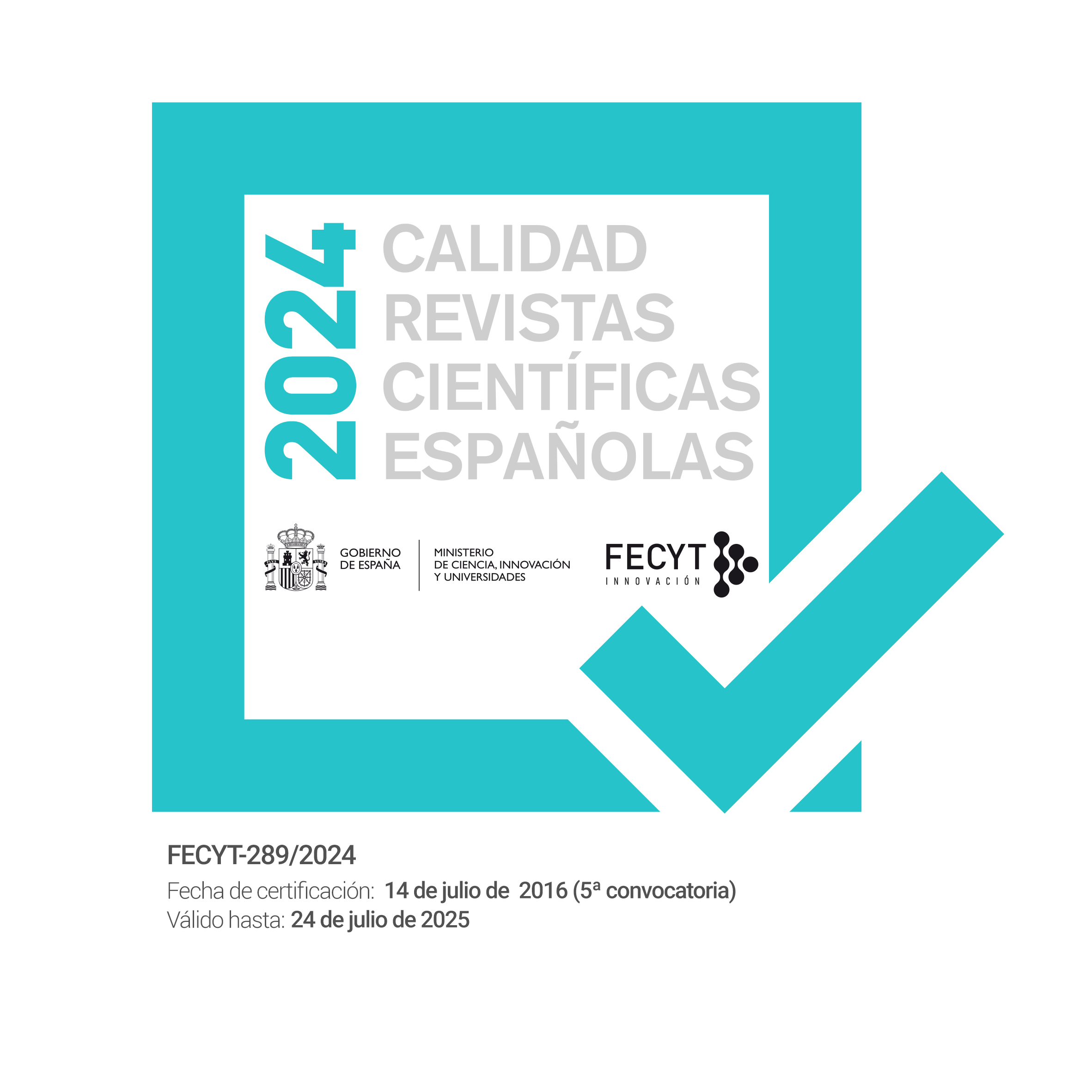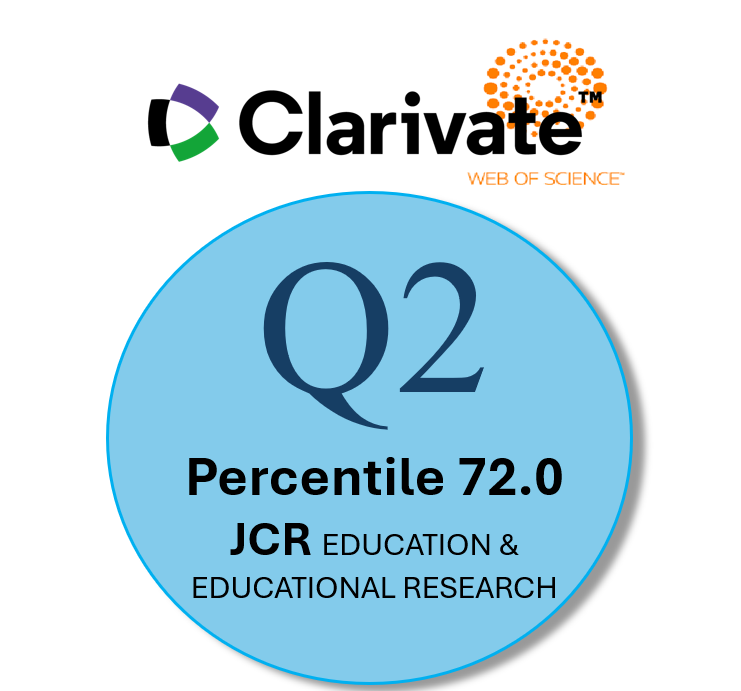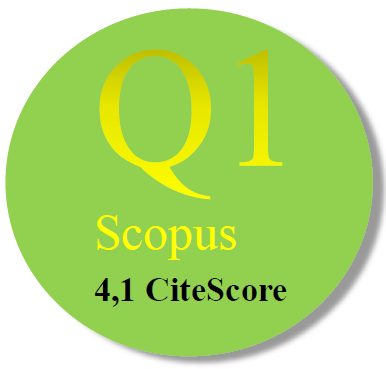The Wreader´s Education at The Victorian Web: Dynamic Readings, Argumentative Commentary, Infinite Curation
Supporting Agencies
- Esta publicación es parte del proyecto de I D i “Innovación epistémica de un modelo de comentario argumentativo de textos multimodales en la enseñanza del español como lengua materna y extranjera” / ayuda PGC2018-101457-B-I00, financiado por MCIN/AEI/10.13039/501100011033/ y por “FEDER Una manera de hacer Europa”.
Abstract
This multiple case study has investigated the hypertextual and argumentative competences of eleven groups of students from the Primary Education Degree in a process of dynamic intertextual reading and writing of critical curatorial and recurring comments on blogs based on lexias from the academic site The Victorian Web, whose careful network in heteroglossic semiosis favors the construct wreader (epistemic reader-writer) in the cognitive mediation of the commentator. The methodical design of the sequential analysis of the process has involved microethnographic observation whose results appear in a flowchart of the collaborative task. The analysis of the corpus of curatorships in hyperlinked constellations and hypertextual-argumentative qualities incorporates specific matrices on lexias, coherence, multimodality, prototypes and strategies, whose data discussed have allowed elucidating in half of the cases the survival of logocentric habits of atomized reading and writing. reproductive knowledge that his comments have failed as dissertations according to arguments of authority and in the other half the initiation in abductive hypotheses by analogical coherence of the writer as an efficient cause to give plausible meaning to his critical comments. Paraphrastic comments prevail in recurrences without intertextuality. Therefore, the conclusions indicate epistemic training strategies of infinite healing.
Downloads
-
Abstract769
-
PDF (Español (España))1141
-
PDF1141
References
Aarseth, E. J. (1997). No linealidad y teoría literaria. En G. P. Landow (comp.). Teoría del hipertexto (pp. 71-108). Paidós.
Allen, (2000). Intertextuality. Routledge.
Amo, J. M. de (2016). Textos multimodales en la educación literaria: la novela gráfica metaficcional en la formación literaria. En A. Mendoza (Coord.), Propuestas y experiencias sobre estructuras hipertextuales literarias en el aula (pp. 91-112). Octaedro.
Amo, J. M. de (2019). La mutación cultural: estudios sobre lectura digital. En J. M. de Amo (2019). Nuevos modos de lectura en la era digital (pp. 15-40). Síntesis.
Amo, J. M. de, Cleger, O. y Mendoza, A. (Eds.) (2015). Redes hipertextuales en el aula: Literatura, hipertextos y cultura digital. Octaedro.
Anscombre, J.C. y Ducrot, O. (1994). La argumentación en la lengua. Editorial Gredos.
Bajtín, M. (1986). Problemas de la poética de Dostoievski. Fondo de Cultura Económica.
Barthes, R. (1964). Rhétorique de l’image. Communications, 4, 40–51.
Barthes, R. (1980). S/Z. Siglo XXI.
Bazerman, C. y Prior, P. (2004). What Writing Does and How It Does It. An Introduction to Analyzing Texts and Textual Practices. Lawrence Erlbaum Associates, Publishers.
Benjamin, W. (1988). El concepto de crítica del arte en el Romanticismo alemán. Península.
Beuchot, M. (1998). Abducción y analogía. Analogía filosófica: revista de filosofía, investigación y difusión, 12(1), 57-68.
Bråten, I., Strømsø, H. y Salmerón, L. (2011). Trust and mistrust when students read multiple information sources about climate change. Learning and Instruction, 21(2), 180-192.
Britt, M. y Rouet, J. F. (2012). Learning with multiple documents: Component Skills and their Acquisition. En J. R. Kirby y M. J. Lawson (coords.), Enhancing the quality of learning dispositions, instruction, and learning processes (pp. 276-314). Cambridge University Press.
Burin, D. I., Barreyro, J. P., Saux, G. & Irrazábal, N. (2015). Navegación y comprensión de textos digitales: Estructuras de hipertexto, conocimientos previos del dominio y capacidad de memoria de trabajo. Electronic Journal of Research in Educational Psychology, 13(37), 529-550.
Carel, M. (2019). Interprétation et décodage argumentatifs. Signo, 44(80), 2-15. doi: 10.17058/signo.v44i80.13661
Caro, M. T. (1999). La escritura del otro. Servicio de Publicaciones de la Universidad de Murcia.
Caro, M.T., Amo, J.M. & Domínguez-Oller J.C. (2021). Implicit Teacher Theories Regarding the Argumentative Commentary of Multimodal Texts in the Teaching of Spanish as a Native and Foreign Language. Frontiers. Psychology, 12:749426. doi: 10.3389/fpsyg.2021.749426
Caro, M. T. y González, M. (2018). Didáctica de la argumentación en el comentario de textos. Síntesis.
Caro, M. T., Vicente-Yagüe, M. I. de, y Valverde, M. T. (2018). Percepción docente sobre costumbres metodológicas de argumentación informal en el comentario de texto / Teacher perception of methodological habits for informal argumentation in text commentary. Revista Española de Pedagogía, 76(270), 273-293. doi: https://doi.org/10.22550/REP76-2-2018-04
Colle, R. (2001). El hipertexto: orden o desorden <>. Cuadernos de Información, 14, 95-104
Consejo de Europa (2002). Marco común europeo de referencia para las lenguas: aprendizaje, enseñanza y evaluación. Ministerio de Educación, Cultura y Deporte, Secretaría General Técnica del MECD Subdirección General de Informaciones y Publicaciones y Grupo Anaya. MCER en español. http://cvc.cervantes.es/ensenanza/biblioteca_ele/marco/
Culler, J. (1987). Barthes. Fondo de Cultura Económica.
Derrida, J. (1971). De la gramatología. Siglo XXI.
Derrida, J. (1975). La diseminación. Fundamentos.
Derrida, J. (1981). Glas. Denoël/Gonthier.
Doury, M. (2018). Les écueils de l´interprétation de l´argumentation. En G. Achard-Bayle, M. Guérin, G. Kleiber et M. Krylyschin (Dirs.), Les sciences du langage et la question de l´interprétation (aujourd´hui) (pp. 97-126). Éditions Lambert-Lucas.
Doury, M. y Plantin, C. (2016). Un enfoque lingüístico e interaccional de la argumentación. Traslaciones. Revista Latinoamericana de Lectura y Escritura, 3(6), 11-46.
Dove, I. (2011). Visual analogies and arguments. In F. Zenker (Ed.) Argumentation: Cognition and Community. Proceedings of the 9th International Conference of the Ontario Society for the Study of Argumentation (OSSA (pp. 1–16). Windsor, ON.
Ducrot, O. (1986). El decir y lo dicho. Polifonía de la enunciación. Paidós.
Dussel, I (2011). Educación y nuevas tecnologías: los desafíos pedagógicos ante el mundo digital. Santillana.
Eco, U. (1992). Los límites de la interpretación. Lumen.
Eco, U. (2003). Vegetal and mineral memory. The future of books. Discurso de inauguración de la Biblioteca de Alejandría. https://www.bibalex.org/attachments/english/Vegetal_and_Mineral_Memory.pdf
Eco, U. (2005). Sobre literatura. Penguin Randon House.
Flores, C. (2021). Introducción a la semiótica social multimodal y sus aplicaciones para el análisis de contextos escolares. Revista Educación, 45(1), 1-29. doi: https://doi.org/10.15517/revedu.v45i1.42732
García-Roca, A. (2019). Los fanfictions como escritura en colaboración: modelos de lectores beta. El profesional de la información, 28(4), e280404. https://doi.org/10.3145/epi.2019.jul.04
Garvis, S. (2015). Narrative Constellations. Exploring Lived Experience in Education. Sense publishers, University of Gothenburg.
Gee, J. y Hayes, E. (2011). Language and Learning in the digital age. Routledge.
Gerring, J. (2014). Metodología de las ciencias sociales. Un marco unificado. Alianza Editorial.
Gilbert, M. (1994). Multi-modal argumentation. Philosophy of the Social Sciences, 24, 159–177.
Glaser, B. G., & Strauss, A. L. (2009). The discovery of grounded theory: Strategies for quali¬tative research. Transaction publishers.
Goldman, S., Lawless, K., Gómez, K., Braasch, J., Macleod, S. y Manning, F. (2010). Literacy in the digital world: Comprehending and learning from multiple sources. En M. Mckeown y L. Kucan (coords.), Bringing reading research to life (pp. 257-284). Guilford Press.
Goldsmith, K. (2014). Inquieto [Todos los movimientos que hizo el cuerpo de Kenneth Goldsmith el 16 de junio de 1997]. La uña rota.
Gumperz, J. & Hymes, D. (1964). The ethnography of communication. American Antropologist, 66.6. Parte 2.
Han, B. C. (2014). En el enjambre. Herder.
Hartman, G. H. (1992). Lectura y creación. Tecnos.
Herrada-Valverde, G., & Herrada-Valverde, R. I. (2017). Factores que influyen en la comprensión lectora de hipertexto. Ocnos. Revista De Estudios Sobre Lectura, 16(2), 7-16. https://doi.org/10.18239/ocnos_2017.16.2.1287
Jenkins, H. (2006). Convergence Culture: Where Old and New Media Collide. New York University Press.
Jonassen, D. H. (2017). Efectos de las bases de conocimiento hipertextuales semánticamente estructuradas en las estructuras de conocimiento de los usuarios. CIC. Cuadernos de Información y Comunicación, 22, 47-62.
Kjeldsen, J. (2015). The study of visual and multimodal argumentation. Argumentation, 29, 115–132.
Landow, G. (1995). Hipertexto: la convergencia de la teoría crítica contemporánea y la tecnología. Paidós.
Landow, G. P. (1997). ¿Qué puede hacer el crítico? La teoría crítica en la edad del hipertexto. En G. P. Landow (Comp.). Teoría del hipertexto (pp. 17-68). Paidós.
Landow, P. G. (2009). Hipertexto 3.0. La teoría crítica y los nuevos medios en una época de globalización. Paidós.
Landow, P. G. (2013). La Web Victoriana y el Curso Victoriano Wiki. Comparación de la eficacia educativa de tareas idénticas en la Web 1.0 y la Web 2.0. Educación y ciudad, 25, 85-106.
Landow, G. P. (2015). ¿Es bueno este hipertexto? Evaluación de la calidad en los hipermedia. En J.M. Amo Sánchez-Fortún, O. Cleger y A. Mendoza Fillola (Eds.). Redes hipertextuales en el aula. Literatura, hipertextos y cultura digital (pp. 9-34). Octaedro.
Lizadra, J. y Suárez-Guerrero, C. (2017). Trabajo entre pares en la curación digital de contenidos curriculares. Revista Latinoamericana de Tecnología Educativa, 16(2), 177-191. doi: https://doi.org/10.17398/1695-288X.16.2.177
Macagno, F. & Pinto, R. (2021). Reconstructing Multimodal Arguments in Advertisements: Combining Pragmatics and Argumentation Theory. Argumentation, 35(1), 141-176.
Magnani, L. (2006). Multimodal Abduction: External Semiotic Anchors and Hybrid Representations. Logic Journal of the IGPS, 14(1), 107-136.
Martín Barbero, J. (2006). La razón técnica desafía a la razón escolar. En M. Narodowski, H. Ospina y A. Martínez-Boom (comps.), La razón técnica desafía a la razón escolar. Construcción de identidades y subjetividades políticas en la formación (pp. 11-26). Noveduc.
Mateo, M.T., Uribe, G., Agosto, S.E. y Álvarez, T. (Coords.). (2020). El miniensayo en las materias del currículo de Secundaria. Octaedro.
Mendoza, A. (2001). El intertexto lector. El espacio de encuentro de las aportaciones del texto con las del lector. Ediciones de la Universidad de Castilla-La Mancha.
Mendoza, A. (2010). La lectura del hipertexto literario. El despliegue de referentes, conexiones e hipervínculos en la formación del lector. En A. Mendoza y C. Romea (Coords.). El lector ante la obra hipertextual (pp. 143-174). Horsori editorial.
Mendoza, A. (2012). Presentación. En A. Mendoza (Coord.), Leer hipertextos. Del marco hipertextual a la formación del lector literario (pp. 9-22). Octaedro.
Moulthrop, S. (1997). Rizoma y resistencia. El hipertexto y el soñar con una nueva cultura. En G. P. Landow (comp.). Teoría del hipertexto (pp. 339-361). Paidós.
Moulthrop, S. (2003). El hipertexto y la política de la interpretación. En M. J. Vega (Ed.). Literatura hipertextual y teoría literaria (pp. 23-31). Mare Nostrum Comunicación.
OCDE (2018). Marco teórico de lectura PISA 2018. MECD-España. https://www.educacionyfp.gob.es/inee/dam/jcr:2f1081a1-c1e4-4799-8a49-9bc589724ca4/marco%20teorico%20lectura%202018_esp_ESP.pdf
O´Halloran, K. L. (2012). Análisis del discurso multimodal. Revista Latinoamericana de Estudios del Discurso, 12(1), 75-97.
Peirce, Ch. S. (1931-1958). Collected Papers. 8 vols. Harvard University Press.
Peirce, Ch. S. (1978). Lecciones sobre el pragmatismo. Aguilar.
Peirce, Ch. S. (1980). Semiótica. Einaudi.
Peirce, Ch. S. (1988). El hombre, un signo. Editorial Crítica.
Perfetti, C., Rouet, J. F. y Britt, M. (1999). Toward a theory of documents representation. En H. V. Oostendorp, y S. Goldman (coords.), The construction of mental representations during reading (pp. 88-104). Erlbaum.
Plantin, Ch. (2016). Dictionnaire de l´argumentation. Une introduction aux études d´argumentation. Ens Editions.
Polarly, C.& Rocci, A. (2015). The argumentative relevance of pictorial and multimodal metaphor in advertising, Journal of Argumentattion in Context, 4(2), 158-200.
Romero, A. N. y Álvarez, M. N. (2020). Grado de alfabetización académica y prácticas escritoras en el marco de un programa formativo. Tendencias Pedagógicas, 36, 74-90. doi: 10.15366/tp2020.36.06
Rovira-Collado, J., Ruiz-Balñus, M. Martínez-Carratalá, F. A. y Gómez-Trigueros, I. (2021). Intertextualidad y multimodalidad en constelaciones transmedia: una propuesta interdisciplinar en la formación docente. Tejuelo, 34, 111-142. doi: https://doi.org/10.17398/1988-8430.34.111
Salinas, J. (1994). Hipertexto e hipermedia en la enseñanza universitaria. PixelBit, Revista de medios de educación, 1, 15-29.
Stake, R. E. (2006). Multiple case study analysis. Guilford Press.
Tseronis, A. y Forceville, Ch. (Eds.) (2017). Multimodal Argumentation and Rhetoric in Media Genres. John Benjamins Publishings Company.
Tur, G. y Urbina, S. (2016). Rúbrica para la evaluación de portafolios electrónicos en el entorno de la Web social. Pixel-Bit. Revista de Medios y Educación, 48, 83-96. doi: http://dx.doi.org/10.12795/pixelbit.2016.i48.06
Vega, N. A., Bañales, G. y Reyna, A. (2013). La comprensión de múltiples documentos en la universidad. El reto de formar lectores competentes. Revista Mexicana de Investigación Educativa, 18(57), 461-48.
Velázquez, G. (2015). El rol de la abducción peirceana en el proceso de la investigación científica. Revista Valenciana, estudios de filosofía y letras, 15, 189-213.
Vicente-Yagüe, M. I. de, Valverde, M.T. y González, M. (2019). Necesidades de formación del profesorado de Lengua y Literatura para el desarrollo de la argumentación informal en el comentario de texto. Educatio Siglo XXI, 37(1), 213–234. doi: https://doi.org/10.6018/educatio.363471
Vincent-Lancrin, S., et al. (2020), Développer la créativité et l’esprit critique des élèves: Des actions concrètes pour l’école, La recherche et l'innovation dans l'enseignement, OECD Publishing, https://doi.org/10.1787/8ec65f18-fr
VV.AA. (1968). Théorie d´Ensemble. Éditions du Seuil.
Wolff, A. & Mulholland, P. (2013). Curation, curation, curation. Proceedings of the 3rd Narrative and Hypertext Workshop ACM. http://dx.doi.org/10.1145/2462216.2462217
Yin, R. K. (2003). Case study research: design and methods. Sage Publications.
Zhao, S., Djonov, E., Björkvall, A., & Boeriis, M. (eds.) (2018). Advancing multimodal and critical discourse studies: interdisciplinary research inspired by Theo van Leeuwen’s social semiotics. Routledge.
Copyright (c) 2023 Distance Education Journal

This work is licensed under a Creative Commons Attribution-NonCommercial 4.0 International License.
Las obras que se publican en esta revista están sujetas a los siguientes términos:
1. El Servicio de Publicaciones de la Universidad de Murcia (la editorial) conserva los derechos patrimoniales (copyright) de las obras publicadas, y favorece y permite la reutilización de las mismas bajo la licencia de uso indicada en el punto 2.
2. Las obras se publican en la edición electrónica de la revista bajo una licencia Creative Commons Reconocimiento-NoComercial-SinObraDerivada 3.0 España (texto legal). Se pueden copiar, usar, difundir, transmitir y exponer públicamente, siempre que: i) se cite la autoría y la fuente original de su publicación (revista, editorial y URL de la obra); ii) no se usen para fines comerciales; iii) se mencione la existencia y especificaciones de esta licencia de uso.
3. Condiciones de auto-archivo. Se permite y se anima a los autores a difundir electrónicamente las versiones pre-print (versión antes de ser evaluada) y/o post-print (versión evaluada y aceptada para su publicación) de sus obras antes de su publicación, ya que favorece su circulación y difusión más temprana y con ello un posible aumento en su citación y alcance entre la comunidad académica. Color RoMEO: verde.













